Work Hours
Monday to Friday: 7AM - 7PM
Weekend: 10AM - 5PM
Types of Bricks used in Construction & Latest Brick Rates
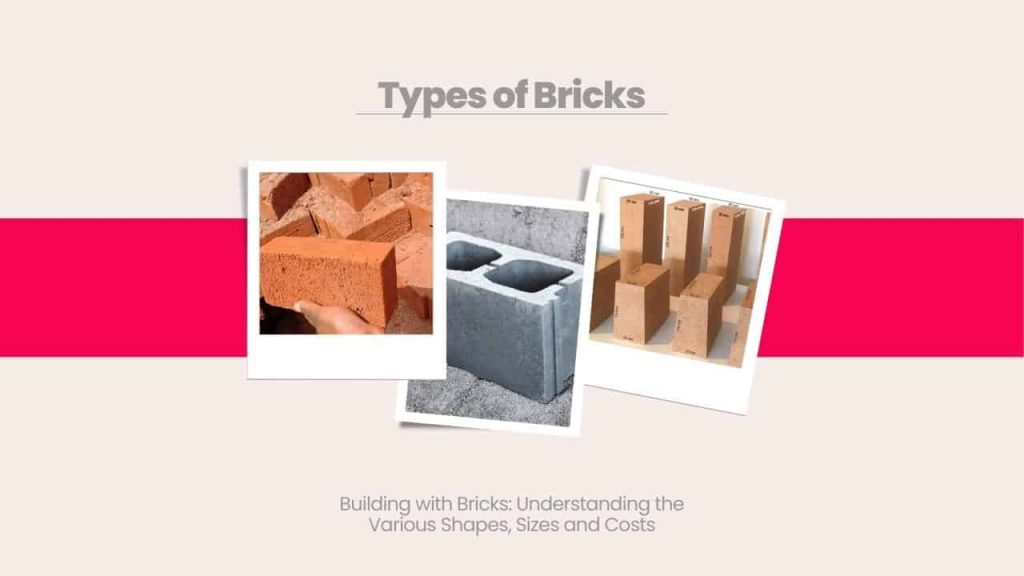
Bricks are one of the most common building materials used in construction worldwide. They have been used for centuries, dating back to ancient times, and continue to be popular today due to their durability and versatility. Bricks are available in a variety of types, each with its own unique properties and characteristics that make them suitable for specific construction purposes. Understanding the different types of bricks available can help builders and homeowners make informed decisions when it comes to selecting the right bricks for their projects. In this blog post, we will explore the various types of bricks used in construction and their specific features. We’ll also give a brief view of brick rates in some of the major states in India.
Uses of Bricks in Construction Projects
- Used for building walls, pillars, arches, and other structures in both residential and commercial buildings.
- Used for constructing chimneys, fireplaces, and furnaces.
- Used for creating garden walls, fences, and retaining walls.
- Used for creating decorative features such as statues and fountains.
- Used for creating pavements, walkways, and driveways.
- Used for creating sound barriers and other forms of noise reduction.
- Used for creating thermal insulation in buildings.
Mostly Used Types of Bricks
1) Clay Bricks
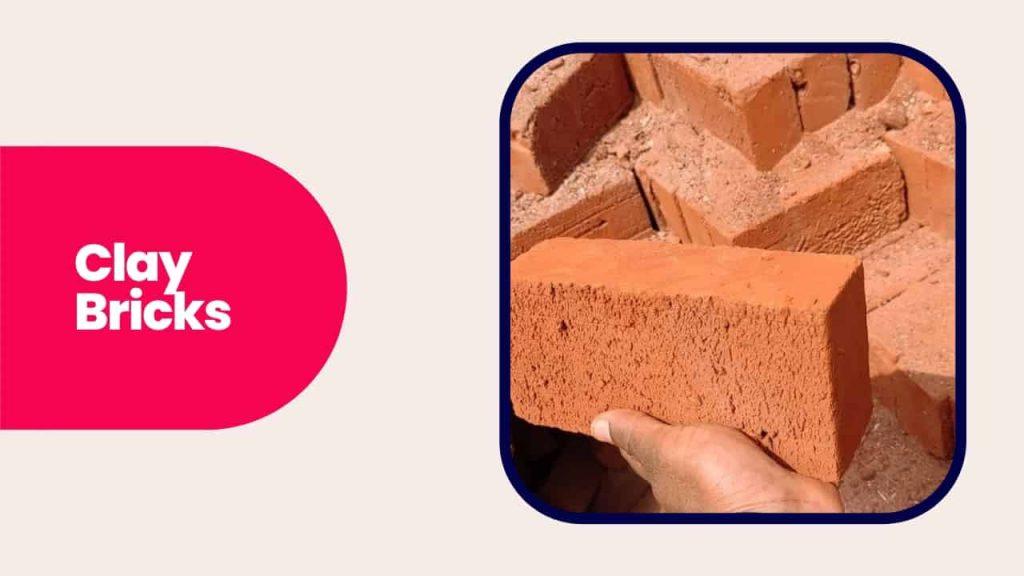
The most common type of brick used in construction is clay bricks. They are made from clay and are known for their durability, strength, and ability to withstand harsh weather conditions.
2) Concrete Bricks
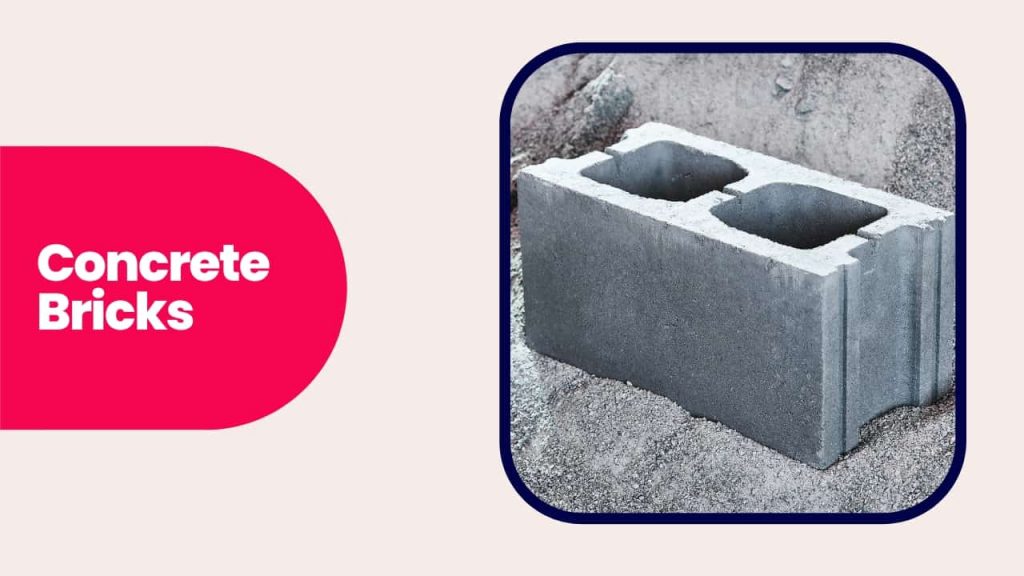
Concrete bricks are a durable and strong type of brick that is made from a mixture of cement, sand, and water. They are versatile and can be used for different construction projects due to the range of colors they come in.
3) Fire Bricks
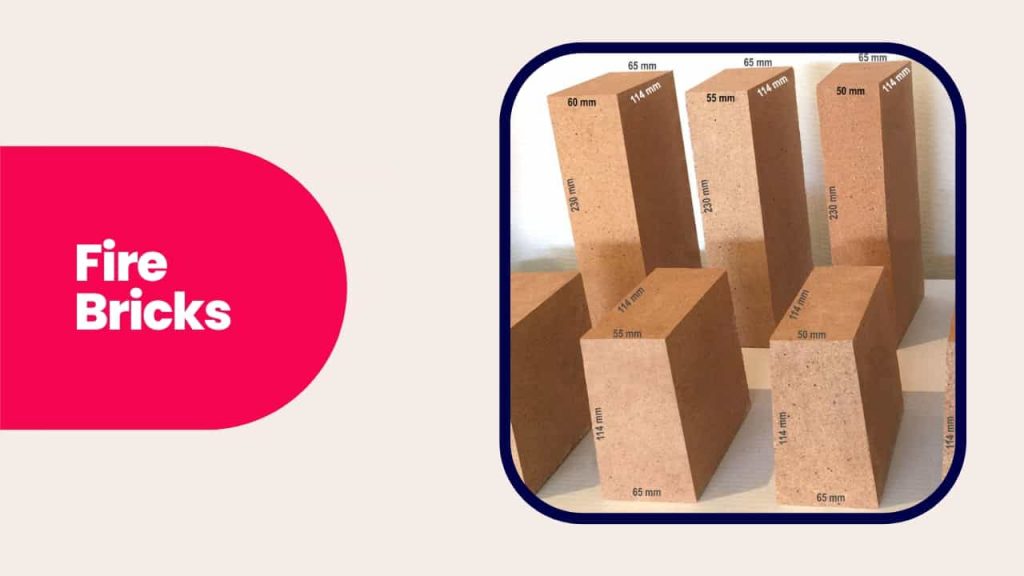
Fire bricks are specially designed bricks made from materials that can withstand high temperatures. These bricks are used to line fireplaces, furnaces, and other heating appliances to protect the surrounding materials from damage due to extreme heat.
4) Sand Lime Bricks
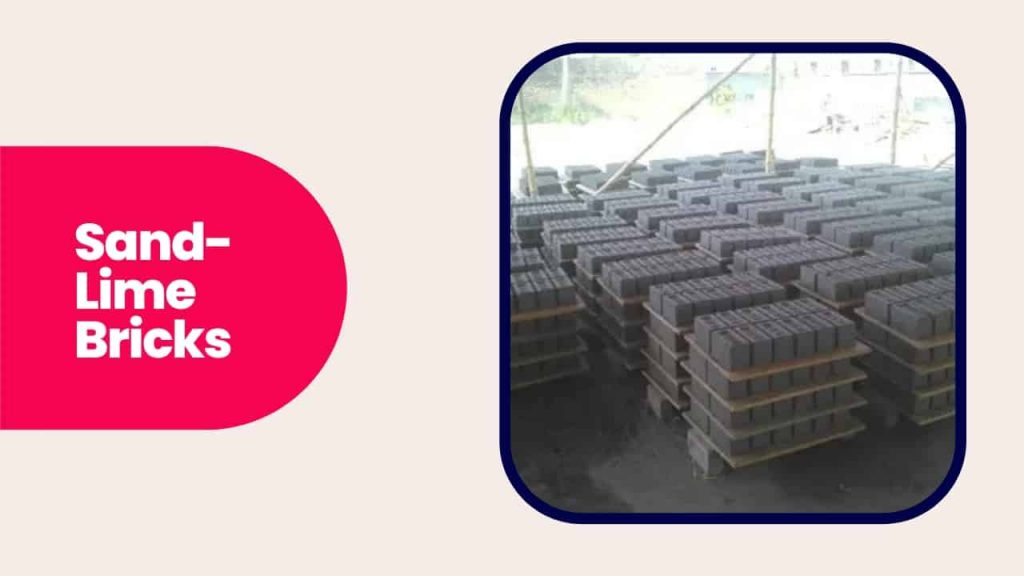
Sand lime bricks are a type of brick made from sand, lime, and water, which are mixed and then compressed into molds. The bricks are then cured in an autoclave, which causes a chemical reaction to occur that hardens the bricks. Sand lime bricks are known for their lightweight, durability, and ability to withstand moisture, making them an ideal choice for load-bearing walls in construction projects.
5) Fly Ash Bricks
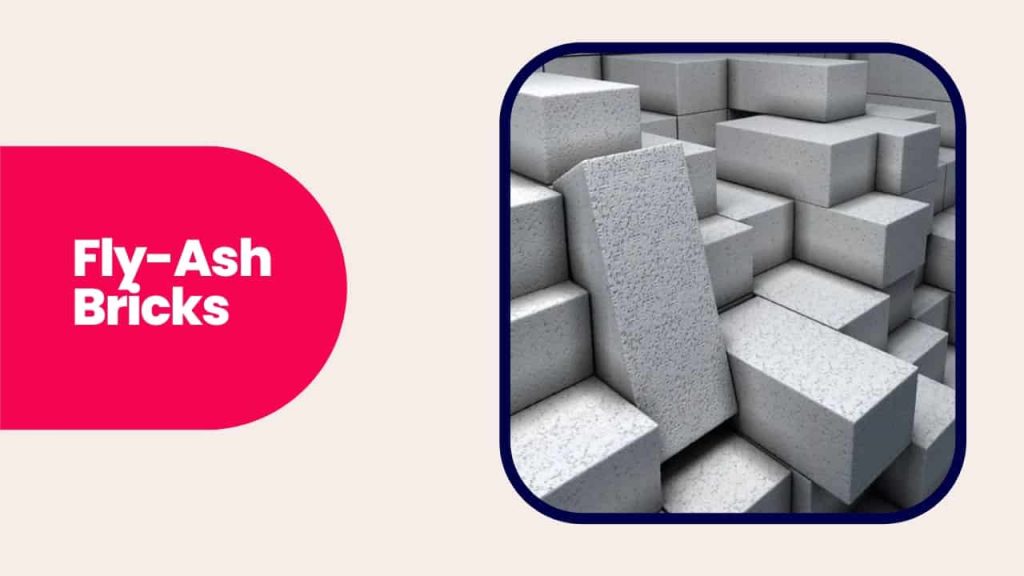
Fly ash bricks are an eco-friendly alternative to traditional clay bricks that are made from fly ash, a byproduct of coal combustion. They are lightweight and strong, making them ideal for construction projects that require durable materials. Additionally, the use of fly ash in brick-making reduces the amount of waste that would otherwise end up in landfills.
5) Engineering Bricks
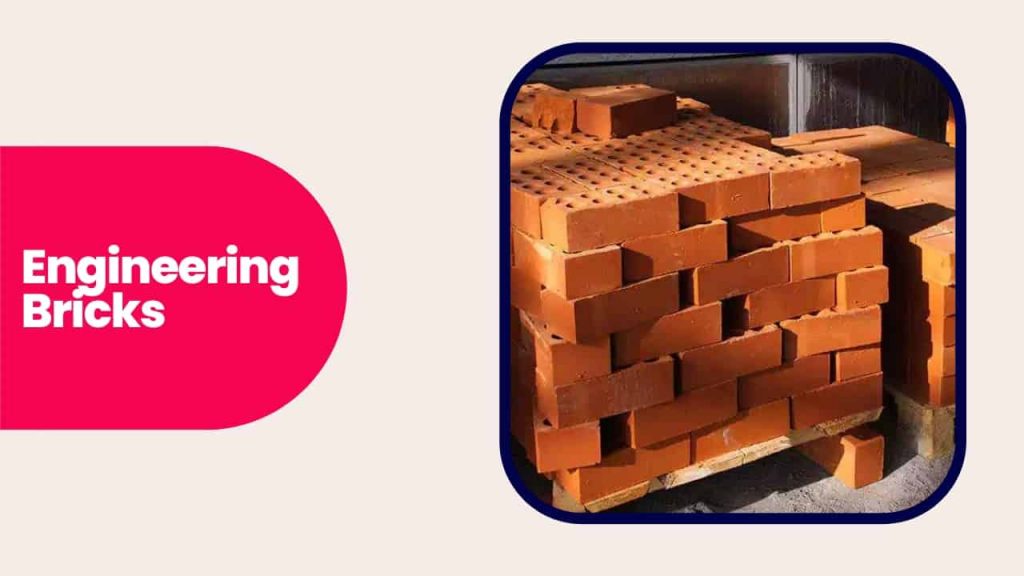
Engineering bricks are a type of brick that is made from high-strength materials and is specifically designed to withstand heavy traffic or harsh weather conditions. These bricks are denser and stronger than standard bricks, and they have a lower water absorption rate. They are commonly used for applications such as bridges, tunnels, and industrial flooring, where high durability and resistance to wear and tear are essential. The use of engineering bricks ensures that the structure remains safe and stable over a long period of time.
Types of Bricks Based on Shapes & Sizes
Brick classification in India is based on their dimensions, which can vary depending on the region and their intended usage. Various brick types are used in India based on their dimensions.
1) Standard Bricks
Standard bricks are commonly used in construction and are known for their size and strength. They are rectangular in shape, with dimensions of 190mm x 90mm x 90mm, and are primarily used for building walls, pillars, and other structural elements. They are a popular choice due to their ability to withstand pressure and durability over time.
2) Jumbo Bricks
Jumbo Bricks” are bricks larger than the standard size, with dimensions of 230mm x 110mm x 70mm. They are commonly used in the construction of larger walls and other structural elements.
3) Hollow Bricks
Hollow bricks are lighter in weight than standard bricks and have a hollow core. They come in different sizes, ranging from 390mm x 190mm x 190mm to 290mm x 140mm x 90mm, and are commonly used for constructing walls and other structural elements.
4) Bullnose Bricks
Bullnose Bricks are a type of brick that features a rounded edge, making them ideal for creating decorative elements such as arches, windowsills, and door frames. They come in various sizes and shapes to fit different architectural styles and design needs.
5) Perforated Bricks
Perforated bricks, commonly used in the construction of walls and other structural elements, have small holes or perforations that enable better air circulation and insulation.
5) Zigzag Bricks
Zigzag Bricks have a zigzag shape, which provides a better grip and prevents slippage. They are commonly used to construct pavements, walkways, and driveways.
Also Read: Different Types of Stones Used in Building Construction Every Contractor Should Know
Brick Rates in Major States
The table indicates the average brick rates in some of the major states in India.
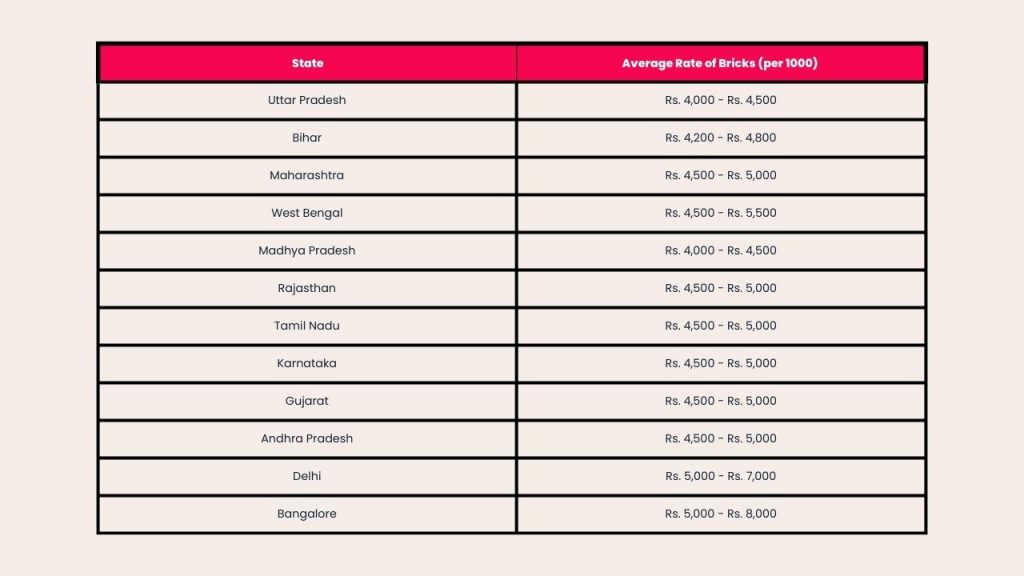
Conclusion
In conclusion, understanding the different types of bricks used in construction is essential in determining the best materials for your project. From traditional clay bricks to environmentally friendly fly ash bricks, each type offers unique benefits in terms of durability, strength, and insulation. Additionally, the dimensions and shapes of bricks can vary greatly, allowing for a wide range of creative possibilities in architectural design. Whether you are building a residential or commercial structure, selecting the right type of brick can help ensure a long-lasting and efficient building that meets your needs and exceeds your expectations.
Try Onsite, #1 Tool For Site Tracking




